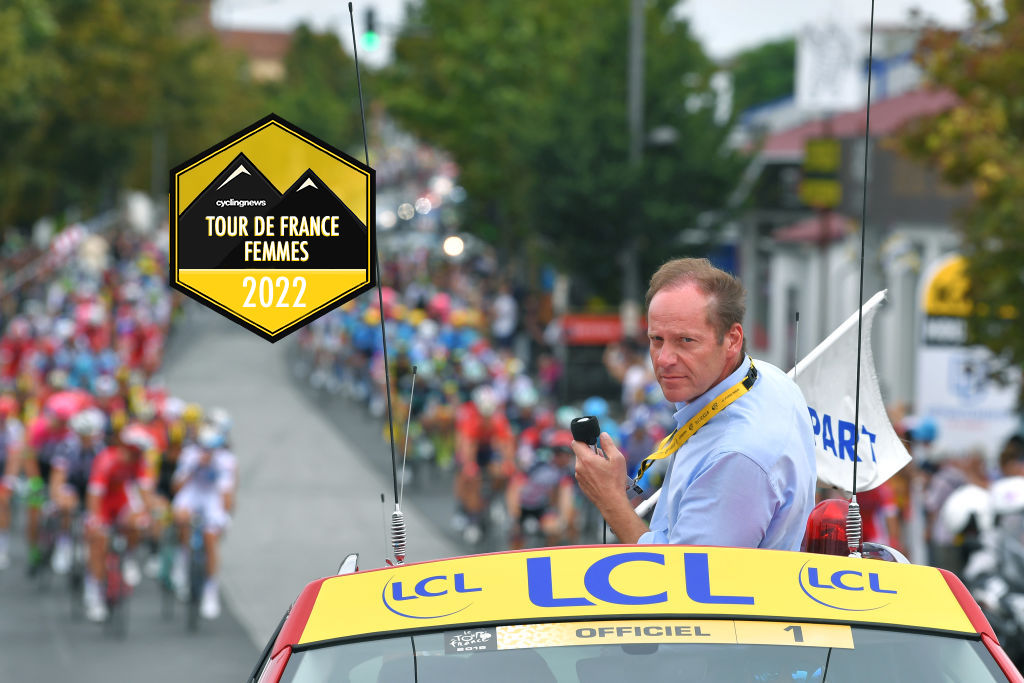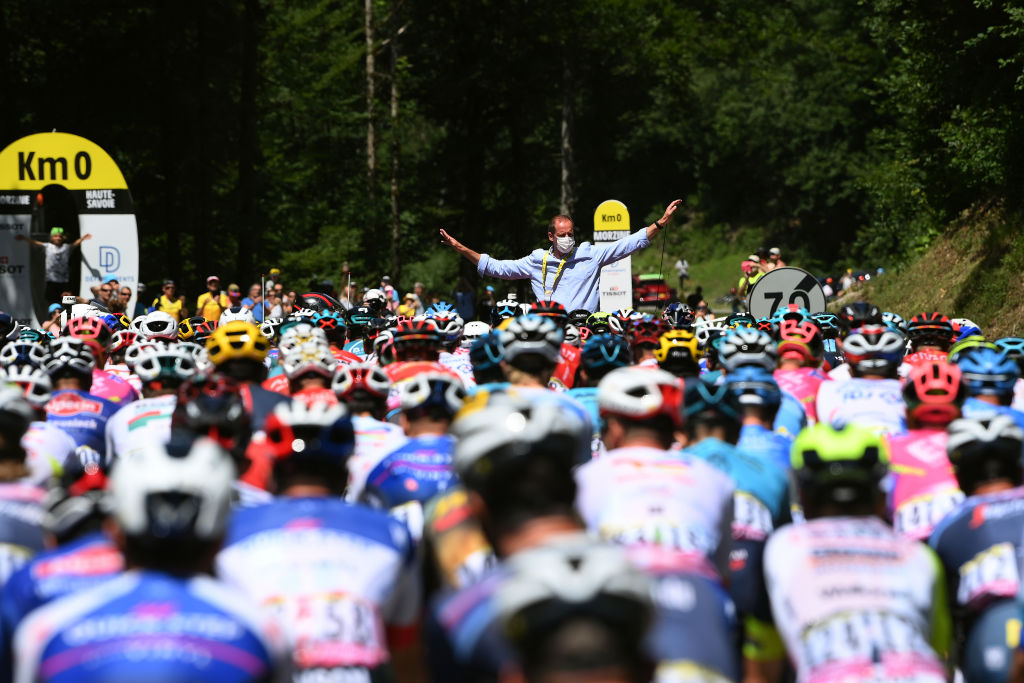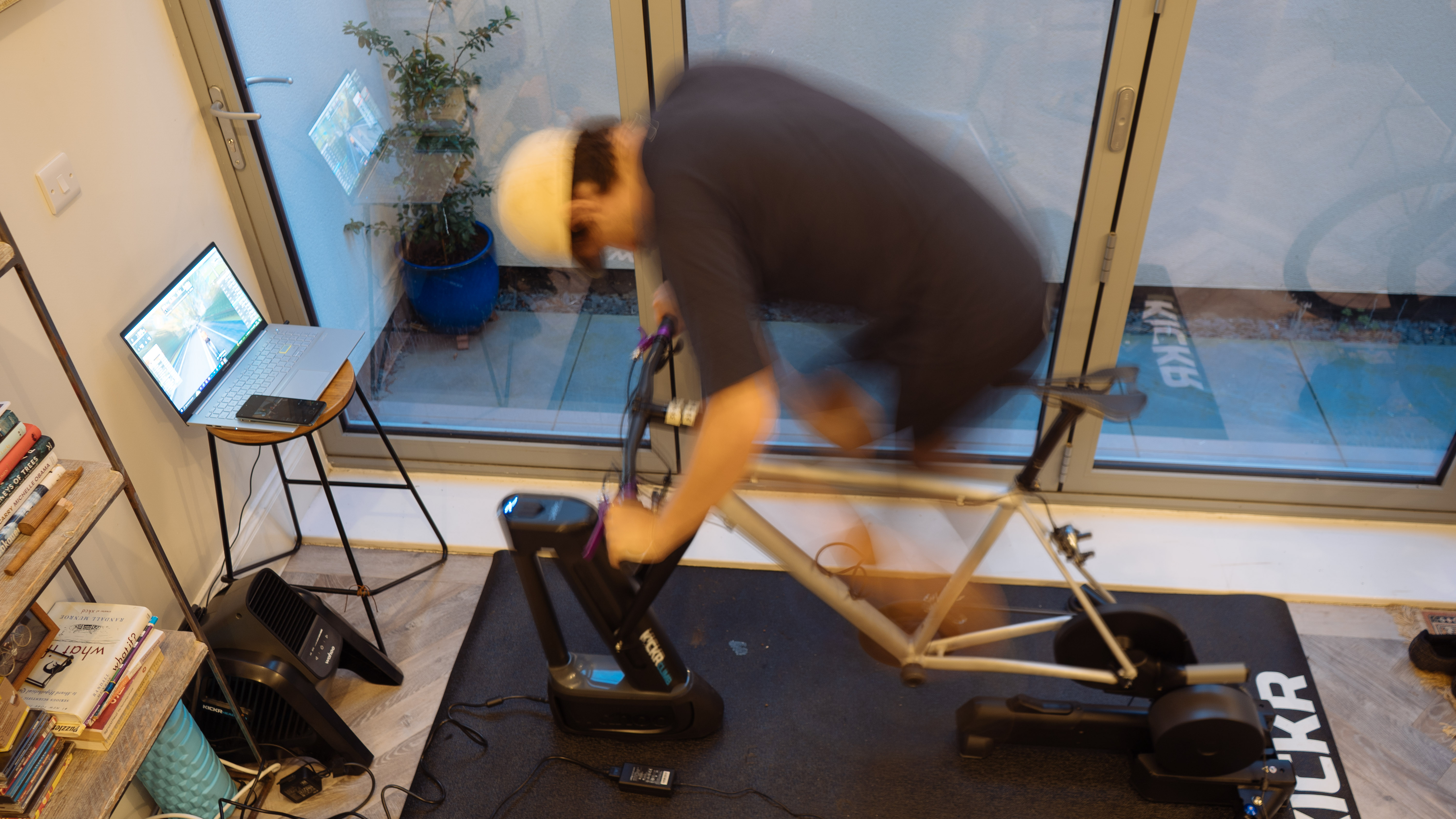In conversation - Christian Prudhomme on resurrecting the women's Tour de France
Cyclingnews speaks to Tour de France chief about hiring race director Rousse and the elements required to make the event a success

It has been a busy couple of years for the Tour de France Director, Christian Prudhomme, resurrecting the women's Tour de France – now called the Tour de France Femmes avec Zwift – an event originally set for 2021 but that was deferred due to the pandemic.
Receiving the investment from title sponsor, Zwift, has been key in making the idea a reality. While Prudhomme is very much aware of other established women’s stage races in the calendar, for him the underpinning element of the Tour de France Femmes is the need to have a high profile event with media coverage.
This aspect goes back to a meeting he had with a delegation of women racers 10 years ago, in which Marianne Vos highlighted the need for a women’s Tour de France to receive media coverage.
As with the men's Grand Tour, Prudhomme has done a marathon round of publicity visits with Tour de France Femmes Director, Marion Rousse, to the host towns.
Prudhomme reflects on the event as Cyclingnews caught up with him ahead of the eight-day women's race, set to begin at the Eiffel Tower on July 24 and conclude at the summit of La Super Planche des Belles Filles on July 31.
Cyclingnews: What made you decide to stage the Tour de France Femmes now?
Christian Prudhomme: I like to think that we have now entered a virtuous circle in which organisations and sponsors such as LCL (formerly Credit Lyonnais), Skoda, LeClerc that have worked with us for many years believe in us. Newer sponsors, and of course the lead sponsor, Zwift, have come on board. With this backing it is hoped that we can balance the books from the first year of the competition.
The latest race content, interviews, features, reviews and expert buying guides, direct to your inbox!
If the Tour de France Feminin during the 1980s stopped after six editions, it was because they were losing too much money on it. Other people created other stage races such as La Grande Boucle Feminine and La Route de France Feminine. But they also stopped for the same reasons – the same cause, the same effect.
So the financial aspect is principal. We want to create an event that will have longevity – a race that exists in five years, 50 years, 100 years even 200 years’ time. We now feel optimistic about a future for a Tour de France Femmes.
CN: How important was it to have Marion Rousse as the Director of the race?
CP: It was really important when Marion accepted the invitation. She has been a racer herself and was the French National Champion in 2012. She is the partner of Julian Alaphilippe, two-time World Champion – that counts as well. Also she was a consultant at Eurosport and has been at France Television for many years now.
Furthermore she understands event organisation given that she has been the Assistant Director of the Tour de la Provence for the last few years. In addition she was born into a cycling family as her cousins, the Lefèvre brothers are former Tour de France racers. As a child, Marion dreamed of being a champion racer and wished she could compete in a Tour de France. So, for us to have Marion is really significant.
While Marion will be working on the sporting aspect of the race along with Franck Perque (from the technical team headed by Thierry Gouvenou), I will be at the race with my Assistant Director Pierre-Yves Thouault to help cement and endorse Marion’s role as a director.
During the early years as a director it can be difficult when meeting and getting to know all the key players who facilitate the staging of the race (local councillors and politicians, the police, the gendarmerie, the first responders etc) as I found. So, I want to be there to assist Marion with that just like Jean-Marie LeBlanc did for me about 15 years ago when I was new in my role at the Tour de France.
CN: Why is the Tour de France Femmes with Zwift taking place in the Vosges?
CP: We are going to the Vosges because the first significant summit that was crested in the history of the Tour de France was the Ballon d’Alsace during the third edition, in 1905.
We wanted to show that we were creating a woman’s race that would be perennial, and therefore add an emblematic aspect to the race. So we added some historic Tour references to the race. As well as the Ballon d’Alsace, there is also the arrival at Epernay. This was the finale of a stage in 2019 in which Julian Alaphilippe took his first yellow jersey.
Also, we wanted to have a point in common on both the Tour and the Tour de France Femmes. That’s the Super Planche des Belles Filles at stage seven in the Tour, and the finale three weeks later in the Tour de France Femmes avec Zwift.
CN: How much engagement did you get from stakeholders and sponsors?
CP: There was enthusiasm, and pride from the stakeholders, and it was obvious from them even during the inaugural Paris-Roubaix Femmes last year, as well as during the presentation of the Tour de France Femmes at the Palais de Congres in Paris last October.
However, when it comes to hosting stage towns there was a difference between the Tour and the Tour de France Femmes. We get about 300 towns requesting to host a stage of the Tour de France and I feel like Santa Claus when I accept their request and the towns are overjoyed.
However, for the Tour de France Femmes we didn’t have anything like that number of requests to host a stage. For this year’s Tour de France Femmes I had to knock at the doors of all the host towns. They all said yes when asked about hosting a stage, but I was the one who had to approach them.
I think once the race takes place and the race is televised every day, I am certain we will have towns approaching us and asking to host the Tour de France Femmes avec Zwift.
CN: Which stages are you looking forward to?
CP: Well, the Tour de France Femmes includes a stage with a series of gravel roads – something which hasn’t appeared in the Tour before. The Tour has been over the Plateau de Glières in the Alps, the HQ for the French Resistance, though they were white roads included for the historic rather than competitive aspect.
The Tour de France Femmes will have gravel roads as a challenge. It will be like having a Classic race within the Tour, passing through the magnificent Champagne region between Troyes and Bar-sur-Aube.
That is a stage I really would like to see. Then there’s the stage the day before, also in Champagne, to Epernay and the stages in the Vosges over the Ballon d’Alsace, Le Grand Ballon, and La Planche des Belles Filles will be exciting.
CN: Which racers are your picks for the race?
CP: I don’t know. We know that the riders from the Netherlands often dominate the races. Even if Anna van der Breggen has retired from racing there are still others like Annemiek van Vleuten, and Demi Vollering notably.
We also saw a lot of Italian cyclists winning in the early part of the season, notably the World Champion Elisa Balsamo. There is also Marta Cavalli who won Amstel Gold and Flèche Wallonne. There won’t be Elizabeth Deignan, who is focussed on her family, which is great, though we hope she will come back and race as at high a level as before.
I hope there can be a French rider in the mix, such as Évita Muzic, or Audrey Cordon-Ragot who is a personality. In racing you don’t just have to have champions, we like personalities too; Audrey Cordon-Ragot is a personality in France.
I hope that the race doesn’t become like a Dutch Championships! Of course, I wish the best to the Dutch racers, but I would be delighted to see a contest between riders of various nationalities.

CN: You were a journalist at the time of the original Tour de France Feminin organised by the Société du Tour de France in the 1980s. What do you recall about it?
CP: I don’t remember the first one in 1984, but later I remember one of the biggest names in French sport at that time was Jeannie Longo. She had an impressive palmarès. Jeannie Longo was a massive champion, a big personality, and a real character. She did a lot to progress women’s cycling during the 1980s.
At a personal level, as a journalist I had the opportunity to commentate on TV for the World Championships in 1989, 1990, 1991 and so I commentated when Jeannie Longo won in 1989, when Catherine Marsal won in 1990 and Leontien van Moorsel won in 1991, as well as for the team time trials – the French victory one year and the Dutch victory another year.
So, naturally I have fond memories of those days. Women’s races were broadcast, but then it soon stopped as women’s racing in France fell apart.
CN: Does the interest in the Paris-Roubaix give you confidence for the interest in the Tour de France Femmes avec Zwift?
CP: Yes. For me, Paris-Roubaix was a massive deal. Many top women racers had been calling for a women’s Tour de France, but hardly anyone asked me about a women’s Paris-Roubaix.
The Paris-Roubaix is seen very much as a hard man’s race. So having women sign up to this was exceptional. Seeing the pride and happiness on their faces when they arrived into the velodrome was something special.
Many women knew that they would finish outside the time limit, but they still wanted to complete the route and arrive in the velodrome. They recognised that it was a seminal moment in women’s cycle racing. It was really touching, really moving, and a pleasure to see.
Also, when presenting the women’s Tour de France the women racers looked very eager. So, we are naturally optimistic and confident in the interest that will be shown in the Tour de France. It feels like we are experiencing a movement in cycling that is continuously gaining momentum.
CN: Will future editions of the Tour de France Femmes be held in other regions and will it be longer than eight days?
CP: Well, the start in Paris was for the first year. The subsequent years won’t necessarily be from Paris, however, they will start on a Sunday, when the Tour finishes, unless it’s during an Olympic year.
We don’t want to put the cart before the horse, so we will have to see how this first edition goes, analyse the audience levels etc and then we can take a view on the format of the race in subsequent years. We are optimistic but we have to wait and see. What I can say is that we won’t be in the Vosges every year, and in the future we will go to other regions.
CN: What success factors did you consider in organising the Tour de France Femmes?
CP: The visionary for the Tour de France Feminin in the 1980s was Félix Levitan in 1984. They invested in the race because they believed in the future. But after five or six years of losses it couldn’t continue. Other companies also tried to organise a women’s stage race and everyone fell foul with the project, losing money and the races ended. Progress was made too quickly and it wasn’t sustainable.
The involvement of Zwift is a key player in the existence of the race. As with any company, you can’t continue with a race that constantly loses money – whether it’s a men’s or a women’s race.
I always remember my meeting with the women pro racers 10 years ago when we discussed a women’s Tour de France, and devised La Course by Le Tour. Marianne Vos, who is a remarkable woman who is a great ambassador was clear that the race would need to have media coverage in order to build interest. That is something I have kept in mind throughout the planning process.
We will have 2.5 hours of transmission per day, and during that period, in late July it is possible to find scheduling slots to broadcast the race. Furthermore, having the race as a fourth week continuing from the Tour de France would attract interest.
However, we have to take a step-by-step approach. Representatives from some of the women’s teams feel that women’s cycle racing is developing too quickly. They are concerned that they may not have the structure to keep up with the developments. So we have to be mindful of not progressing too quickly and focus on creating a solid sustainable base and a race that will last.
